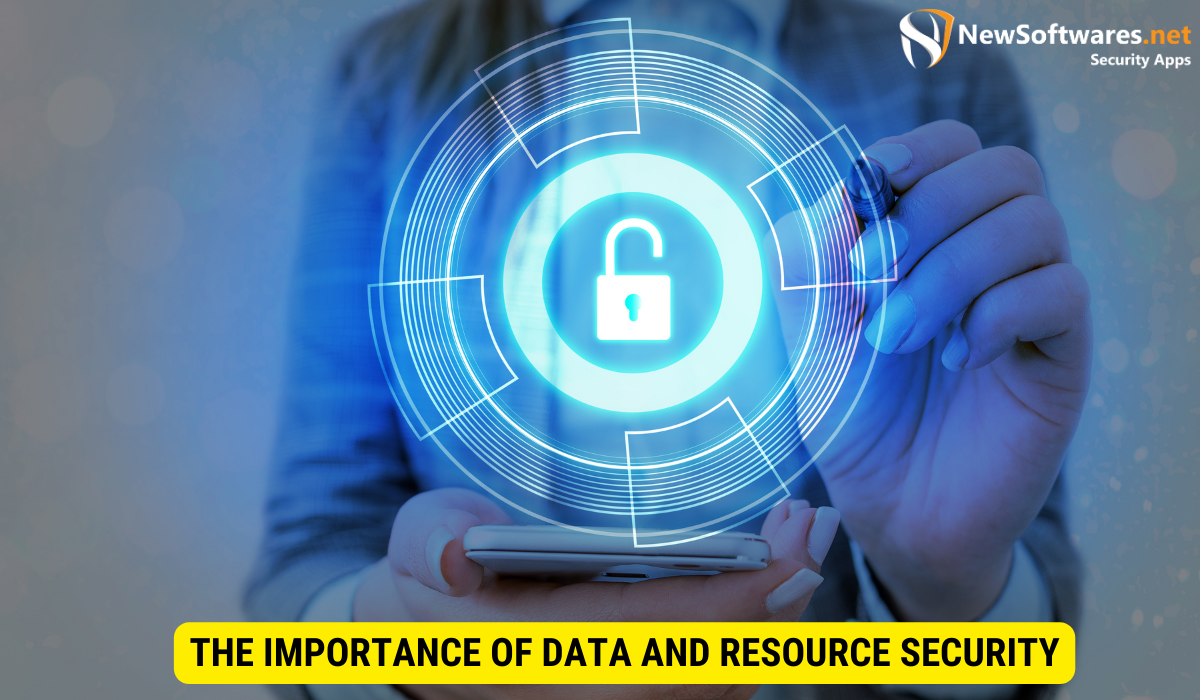A multi layered security approach involves implementing various defense layers to protect data and resources effectively. It includes components like firewalls, access controls, encryption, regular updates, and employee education, and requires a systematic implementation plan, continuous evaluation, and readiness for emerging technologies and threats.
The security of data and resources is of utmost importance in today’s digital world. With the ever-increasing threat landscape, organizations need to adopt a multi layered approach to protect their valuable assets. I will explore the significance of data and resource security, define the multi layered approach, discuss the implementation process, evaluate its effectiveness, and explore future trends in this field.
The Importance of Data and Resource Security

With the exponential growth of data and the increasing reliance on digital resources, the importance of securing these assets cannot be overstated. Data breaches can result in financial losses, damage to reputation, and legal consequences. Likewise, insufficient resource security can lead to unauthorized access, system downtime, and loss of productivity. Therefore, organizations need to prioritize data and resource security as a fundamental aspect of their operations.
The Rising Threat to Data Security
The threat landscape for data security is constantly evolving, with hackers becoming more sophisticated and creative in their attack methods. Cybercriminals are constantly developing new malware, phishing techniques, and social engineering tactics to gain unauthorized access to sensitive data. As a result, organizations must stay vigilant and continuously update their security measures to protect against emerging threats.
Why Resource Security Matters
Resource security encompasses the protection of physical and virtual assets, such as servers, networks, and applications. Without adequate resource security measures in place, organizations are vulnerable to external attacks and internal breaches. Resource security ensures the availability, integrity, and confidentiality of these critical assets, safeguarding their functionality and the overall business operations.
Defining the Multi Layered Approach
The multi layered approach to security involves implementing multiple layers of defense to create a robust and comprehensive security strategy. Each layer addresses a specific aspect of security, increasing the overall resilience of the system. By utilizing different security measures and controls at various levels, organizations can minimize the risk of a successful breach.
Key Components of a Multi Layered Security Strategy
A multi layered security strategy typically includes the following key components:
- Firewalls and Intrusion Detection Systems: These network security measures monitor and control incoming and outgoing network traffic, protecting against unauthorized access and detecting potential threats.
- Access Controls: Implementing strict access controls ensures that only authorized individuals can access sensitive data and resources. This includes strong passwords, multi-factor authentication, and user privileges management.
- Encryption: Encrypting data both in transit and at rest provides an extra layer of protection against unauthorized access. Encryption algorithms and secure key management protocols ensure that data remains secure even if it falls into the wrong hands.
- Regular Updates and Patch Management: Keeping systems, software, and applications up to date with the latest security patches is crucial in preventing known vulnerabilities from being exploited.
- Employee Education: Training employees on security best practices and raising awareness about the importance of data and resource security helps create a culture of security within the organization.
The Role of Encryption in Layered Security
Encryption plays a vital role in a multi layered security strategy. By encrypting data, organizations ensure that even if it is intercepted or stolen, it remains unreadable and useless to unauthorized individuals. Encryption works by converting data into a ciphertext that can only be decrypted with the correct encryption key. This technology provides an additional safeguard against data breaches and unauthorized access.
Implementing a Multi Layered Security Strategy
Implementing a multi layered security strategy requires careful planning and execution. Organizations should follow a systematic approach to develop and implement their security plan.
Steps to Develop a Layered Security Plan
The following steps can guide organizations in developing an effective layered security plan:
- Assess Current Security Measures: Conduct a thorough assessment of the existing security infrastructure to identify any gaps or weaknesses.
- Identify Risks and Prioritize: Evaluate potential risks and threats, and prioritize them based on their likelihood and potential impact.
- Select Appropriate Security Controls: Choose suitable security measures and controls based on the identified risks and organizational requirements.
- Develop Security Policies and Procedures: Create clear and concise security policies and procedures that outline the expected behavior and responsibilities of employees regarding data and resource security.
- Implement and Test: Implement the chosen security controls and conduct regular testing and monitoring to ensure their effectiveness.
- Update and Improve: Continuously update and improve the security plan based on emerging threats, technological advancements, and changes in the organizational environment.
Overcoming Challenges in Implementation
Implementing a multi layered security strategy may face several challenges, including resistance from employees, budget constraints, and the complexity of integrating various security solutions. However, by addressing these challenges head-on through effective communication, adequate resource allocation, and leveraging professional expertise, organizations can overcome these hurdles and successfully implement a layered security approach.
Evaluating the Effectiveness of a Multi Layered Security Approach
Regular evaluation of the effectiveness of a multi layered security approach is crucial in ensuring ongoing protection and identifying areas for improvement.
Metrics for Measuring Security Success
Measuring security success can be done using various metrics, including:
- Number of Incidents: Tracking the number of security incidents and comparing them over time can indicate the effectiveness of security measures.
- Detection and Response Time: Monitoring the time taken to detect and respond to security incidents helps gauge the efficiency of the security system.
- Compliance with Security Standards: Assessing adherence to security standards and regulatory requirements provides insights into the effectiveness of security controls.
- User Satisfaction: Conducting surveys or feedback sessions with users to gauge their satisfaction with the implemented security measures.
- Financial Impact: Assessing the financial impact of security incidents and comparing it with the investment in security infrastructure can provide a measure of the return on investment.
Continuous Improvement in Security Strategies
To adapt to the evolving threat landscape, organizations must continuously improve their security strategies. This includes staying updated with the latest security trends, investing in emerging technologies, and conducting regular risk assessments to identify potential vulnerabilities. By adopting a proactive and continuous improvement approach, organizations can stay one step ahead of cybercriminals and protect their data and resources effectively.
Future Trends in Multi Layered Security

The field of multi layered security is constantly evolving as new technologies and threats emerge.
The Impact of Emerging Technologies on Security
Emerging technologies such as artificial intelligence (AI), machine learning, and blockchain are revolutionizing the security landscape. AI-powered threat detection systems can identify and respond to security incidents in real-time, while blockchain technology offers decentralized and tamper-proof storage of critical data. Organizations should stay informed about these advancements and evaluate their potential benefits for enhancing their security strategies.
Preparing for the Future of Data and Resource Security
As organizations increasingly rely on digital systems and processes, data and resource security will become even more critical. Proactive measures, such as regularly updating security controls, investing in employee training, and collaborating with cybersecurity experts, will be essential to stay ahead of emerging threats. By embracing a multi layered approach and continuously adapting to new challenges, organizations can effectively secure their data and resources in the future.
Key Takeaways
In summary, understanding the multi layered approach to securing data and resources is essential for organizations to protect their valuable assets. By recognizing the importance of data and resource security, defining the components of a multi layered security strategy, implementing the strategy effectively, evaluating its effectiveness, and preparing for future trends, organizations can establish a robust security posture and mitigate the risks associated with data breaches and resource vulnerabilities.
FAQs
Why is data and resource security important?
Data and resource security is important to protect valuable assets from unauthorized access, financial losses, and damage to reputation.
What is a multi layered security approach?
A multi layered security approach involves implementing multiple layers of defense to create a comprehensive security strategy.
What are the key components of a multi layered security strategy?
The key components of a multi layered security strategy include firewalls, access controls, encryption, regular updates and patch management, and employee education.
How can organizations implement a multi layered security strategy?
Organizations can implement a multi layered security strategy by assessing current security measures, identifying risks, selecting appropriate controls, developing security policies, implementing and testing, and continuously updating and improving the plan.
What are the future trends in multi layered security?
Emerging technologies like AI, machine learning, and blockchain will have a significant impact on the future of multi layered security.
Conclusion
In conclusion, as the threat landscape continues to evolve, organizations must adopt a multi layered approach to securing their data and resources. By understanding the importance of data and resource security, defining a comprehensive security strategy, effectively implementing the strategy, evaluating its effectiveness, and embracing future trends, organizations can create a robust security posture that protects against emerging threats. By prioritizing data and resource security, organizations safeguard their assets, maintain customer trust, and ensure continuity in today’s digital age.
